Recent years have seen the evolution of customer support from a cost center to a critical component of both sales and marketing.
Companies have come to understand the true importance of customer support and the necessity of being available to customers through multiple channels around the clock.
This means that, with most businesses, customers no longer need to contact support through phone only, nor wait on hold for an hour or longer to get the help they need.
Instead, they can get the support they need almost instantly, through the company’s knowledge base or email, live chat, and social media support.
The way businesses view customer support metrics has shifted as well. Instead of being viewed through a cost-cutting lens, customer support metrics are now tied to company goals, including customer satisfaction and NPS.
What is customer support?
Customer support is a set of services a business provides to its customers with the intention of helping customers use the business’ offering to the fullest extent, as well as help them resolve any issues they might encounter.
It includes services such as onboarding assistance, answering customer inquiries, and product troubleshooting.
Depending on the business, these services might be provided in the form of phone or email support, a ticket-based helpdesk, a self-serve knowledge base, or a live chat support system.
The difference between customer support and customer service
Before we go any further and talk about the importance of customer support, how you can improve your business’ customer support, and what skills you should look for in a customer support rep, it’s crucial that we clarify the difference between customer support and customer service.
A lot of people use these two terms interchangeably. However, they’re not one and the same.
The role of customer service is to provide customers with the value they paid for when they bought a particular product or service.
Customer service representatives and agents are trained to maintain a positive attitude and represent the brand in the best way possible.
They take a proactive approach to helping customers and actively work on building customer relationships.
Customer support, on the other hand, is more reactive in nature. Its role is to react to customers’ needs and help them whenever they request assistance.
Customer support representatives react to customers’ inquiries that are submitted through a business’ support channels and guide customers towards resolving the issue they’ve encountered.
The importance of customer support
Customer support has a large influence on the fundamental aspects of business growth, including customer happiness, loyalty, engagement, and feedback.
Providing quality support to your customers is crucial for both retaining customers and extracting more value out of them.
In fact, as much as 50% of consumers spend more with a business after having a positive customer support experience.
Focusing on providing quality customer support allows you to:
Improve customer retention
A mere 5% increase in customer retention can boost a business’ revenue by up to 95%. This is because repeat customers spend 67% more with a business compared to one-time customers.
Solving customers’ issues and answering their questions quickly can do wonders for improving your business’ customer retention.

Generate positive reviews and testimonials
Quality customer support helps to create happy and loyal customers, which, in turn, results in positive reviews and testimonials.
These serve as social proof for your business, and make consumers feel more comfortable about doing business with you.
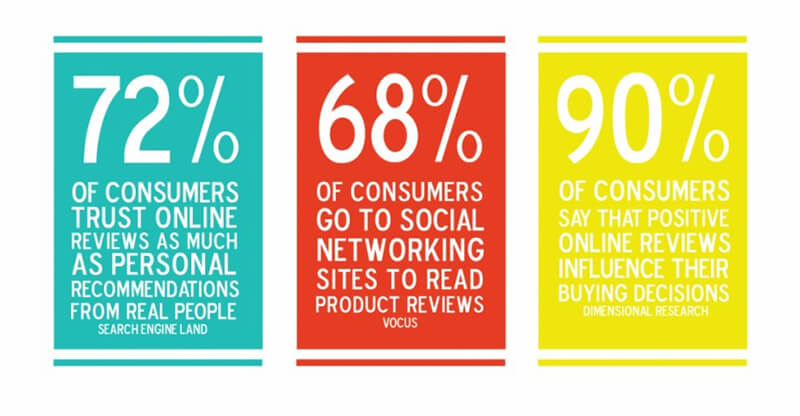
Gain a competitive advantage
If your business is in a highly competitive market, you’re most likely always on the lookout for ways to gain an advantage over your competition.
Providing excellent customer support is a great way to differentiate yourself from your competitors, and even get their customers to switch over to doing business with you.
Improve your product or service
Providing better customer support also means improving communication with your customers, which can lead to learning valuable information about your target audience, their needs, and pain points.
This, in turn, will allow you to improve your offering and have an easier time getting new customers, as well as retaining existing ones.
Key elements of customer support
When looking to create a customer support strategy, you’ll want to focus on the following key elements:
Style
The first thing you’ll need to do is decide on the style of support you’re going to provide. The two main styles you have at your disposal include:
- One big answer approach – Involves answering every query with a highly comprehensive reply that covers all possible scenarios. This could include providing an answer that’s six to seven paragraphs long and includes links to technical documentation or videos. The one big answer approach is suitable for businesses that rely on their knowledge base for dealing with most customer inquiries.
- Conversational approach – The conversational approach, as its’ name implies, relies on having an actual conversation with a customer, either via phone, email, or live chat, and getting to the bottom of the issue.
Tone and voice
Tone and voice refer to the way you’re going to talk to your customers. Are you going to be formal and reserved, or casual and relaxed?
You’ll need to decide how formal you want your replies to be in specific scenarios, as well as if you’re going to take advantage of modern communication trends such as GIFs and emojis.
Deciding on these things in advance will help you have an easier time training your customer support staff and ensuring a consistent customer support experience.
Speed
You’ll also need to decide on response speed.
Is speed of response crucial for your business? If so, you’ll want to put in the time and resources that are necessary to respond to your customers within 24 hours.
Depending on your business and your available resources, it might not be realistic for you to respond to every customer inquiry in 24 hours.
If that’s the case, let your customers know when they can expect a response and make sure to stay within that timeframe.
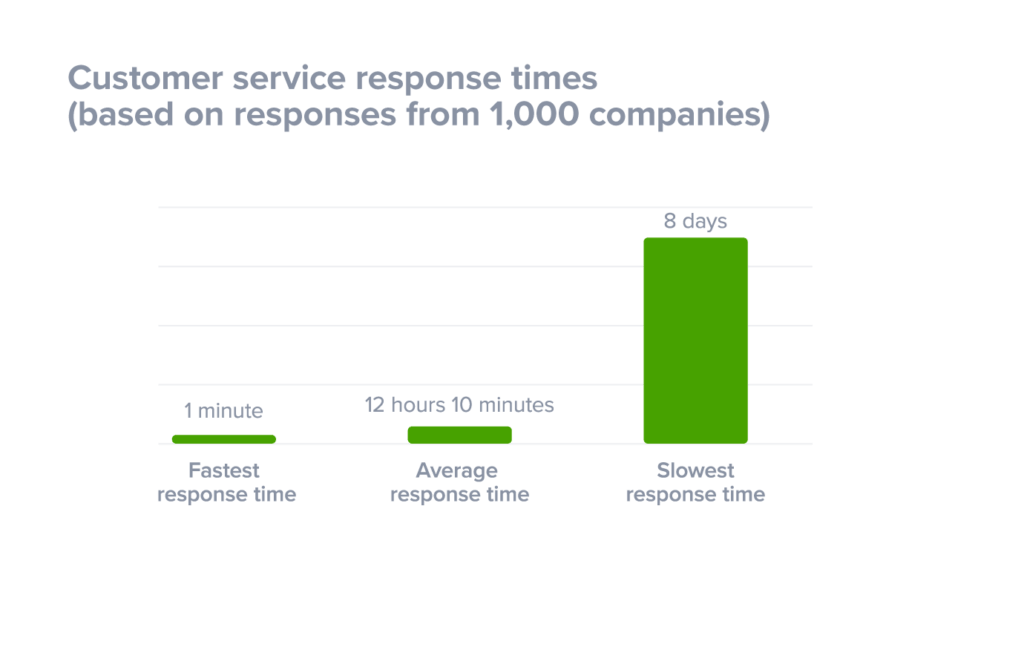
Coverage
Is your customer support team going to be available 24/7? Or just Monday to Friday during specific hours?
You’ll also need to think about which holidays you’re going to observe and if you’re going to provide any form of support during holidays.
Language
Another important thing you’ll need to think about is the languages you’re going to support.
While English will be the most obvious choice, you’ll also want to put some thought into supporting other languages if a large part of your customer base speaks another language.
Process
Finally, you’ll need to devise robust processes to help you manage customer support. In most cases, you should have specific processes that outline how you’re going to deal with emergencies, escalation, refunds, and security.
Your customer support processes will change and evolve over time, but it’s crucial that you establish them as early as possible.
How to improve your customer support
In this section, we’re going to show you five distinct ways you can improve your customer support and improve customer satisfaction and retention in the process.
Respond immediately
While you won’t be able to help your customers as soon as they submit a support request, it’s important that you let them know that you received their request and that you’ll get back to them as soon as possible.
It’s crucial that you communicate hold times, especially if you offering phone support. No one likes being put on hold, especially when they have an issue that they need solved.
Remember not to promise customers something you can’t deliver since this can only damage your company’s reputation and make your customers even more unhappy.

Be honest and realistic with them. If the issue they’re experiencing is your fault, admit it, apologize to them and try to fix it as soon as possible.
Make sure that you personalize your response for each customer so that customers don’t feel as if they’re just a number.
Use their first name in your response, as well as any other details that might be relevant to their request.
Personalization should be an integral part of your customer support approach since as much as 84% of consumers state that being treated like a person is crucial for deciding to buy from a business.

Hire the right people
No matter how good your support processes are, your business won’t be able to provide great customer support without excellent customer support reps.
While everyone can be trained to do customer support, some types of people will always be better at providing support than others.
You need to find these people and get them on your team.
Customer support deals with unsatisfied customers who are often difficult, rude, and emotional on a daily basis.
This makes it crucial that you fill your customer support team with mentally tough people that can deal with pressure and chaos.
Your customer support representatives need to be able to deal with all customer complaints and inquiries professionally and without getting emotions involved.
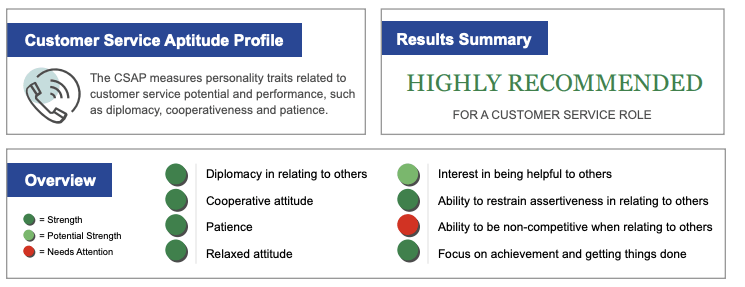
They also need to be ready to move on to the next support request straight away, no matter how unpleasant the previous one might have been.
The best people for a customer support role will have a natural desire to help others. They’ll express genuine empathy and be able to pick up on emotional distress signals.
Anyone working in a customer support role needs to be able to put themselves in the customer’s shoes, as well as quantify the pain the customer feels.
They also need to treat the customer with respect at all times, regardless of how the customer behaves.
Provide proper training
In order to be able to help your customers effectively, your customer support team needs to go through proper training.
What this training will entail will depend on your business and needs. Since every company is different, there is no single best way to train your customer support employees.
In most cases, you’ll want to cover your company’s vision, product knowledge, and industry insights with your training program.
Effective time management and problem-solving are other skills you might want to consider helping your support team develop.
Out of all these, product knowledge is probably the most important thing you’ll want to educate your customer support reps on, since it will be impossible for them to assist your customers effectively if they lack knowledge of how your product or service works.
Your reps need to have an in-depth knowledge of your offering. If possible, make each of your reps go through an onboarding process with one of your experienced product specialists so that they can really cover every aspect of your product.
You should also host monthly review sessions in which you’ll review all the challenges your team faced and discuss how they can deal with new issues that arise.
If budget allows for it, it would also be wise to invest in professional customer support training courses from companies such as Alison.
Empower your customer support team
If you want your customer support team to be highly effective, you need to empower your reps in order to promote employee satisfaction and loyalty.
Show your customer support team how much you value what they do and include them in the decision-making process.
This will go a long way in creating a friendly and productive atmosphere and ensure that your customer support representatives are giving their maximum as well as being happy and satisfied in their role.
Be available on multiple channels
Implementing additional support channels is one of the best ways to improve your customer support.
Which channels you’re going to use to provide support will depend on your available resources, as well as the needs of your customers.
If you have a rather small customer support team and a large customer base, providing phone support might be unrealistic. In that case, you should opt for offering email or live chat support instead.
You should also take your customers’ demographics into account when deciding on support channels.
For example, did you know that people under the age of 25 prefer using social media to communicate with a business’ customer support?
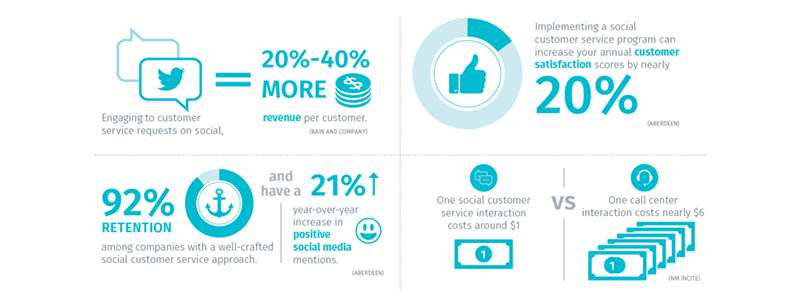
Consumers aged between 25 and 34 prefer email communication, while those over the age of 55 prefer talking with customer support over the phone.
Additionally, you’ll need to consider your products or services when determining the right support channels you should use.
For example, an online clothing retailer will mostly receive questions on billing, returns, and refunds (which can easily be provided over email), while a software provider might need to answer more technical questions (which are more suited for being discussed over the phone or via live chat).
The most common support channels you’ll need to choose from include phone, email, live chat, and helpdesk.
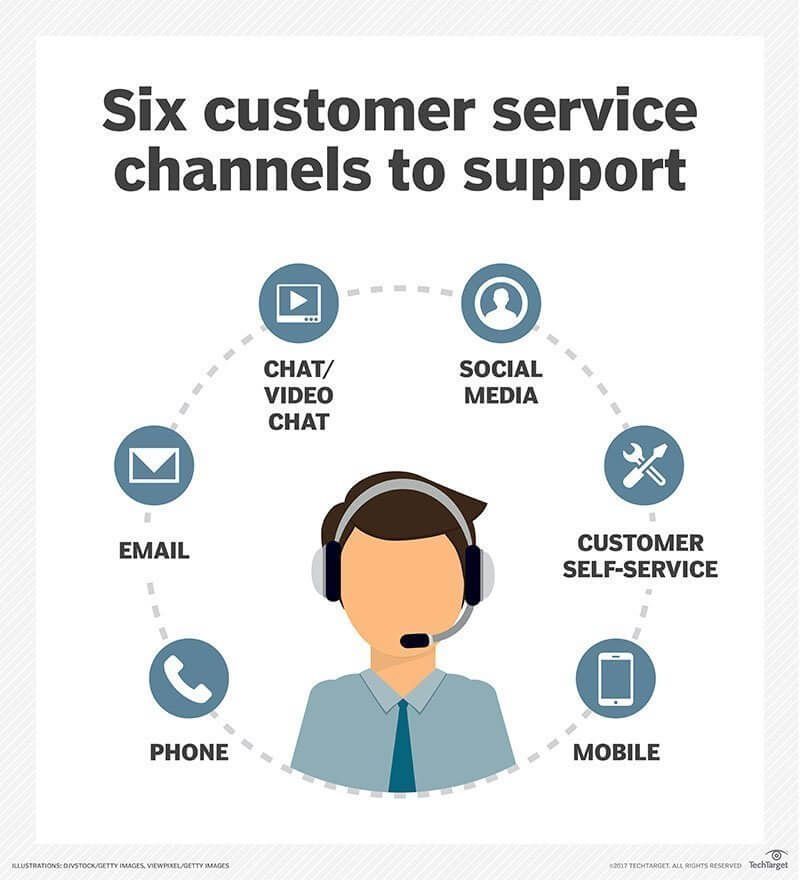
Measure and analyze your customer support results
Finally, you should actively measure and analyze your customer support team’s results at regular intervals.
This will provide you with insights that will enable you to improve your support strategy and help your team assist customers more effectively.
While customer feedback and NPS surveys can be of great help when it comes to measuring your support team’s performance, you should also use employee satisfaction surveys to learn how your reps feel about their job.
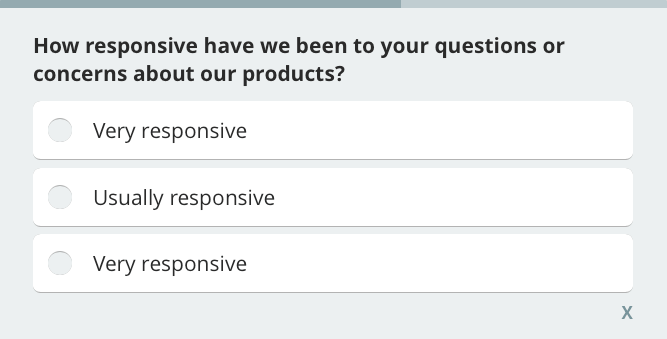
The results of these surveys will allow you to understand what needs to be done to improve your team’s performance and happiness while also increasing customer satisfaction.
Customer support software must-haves
There are certain software solutions that can make your customer support team’s life a lot easier and enable it to help your customers more effectively.
These include ticket systems, customer feedback systems, knowledge base systems, and live chat software.
Ticket system
A ticket system will enable your customer support team to prioritize work and resolve customer issues efficiently.
It helps your reps stay organized and allows them to have an easier time tracking and managing all customer support requests.
Another benefit of a ticket system is that it provides you with an opportunity to find out where your support team spends most of their time so that you can optimize your support processes or educate your reps better so that they’ll be able to deal with support requests more effectively.
Customer feedback system
Having a way to gather and analyze feedback from your customers is crucial for improving your customer support, as well as your product or service offering.
A customer feedback system can help you send out customer surveys and then analyze their results to gain a better understanding of your customers and find ways to improve your customer support to increase customer satisfaction and loyalty.
Knowledge base
If your customer support reps keep running into the same questions from customers over and over again, your business would most likely benefit from a knowledge base.
A self-serve knowledge base containing answers and guides for the most common issues your customers encounter would help you reduce the number of customer support requests you get and decrease your support team’s workload significantly, allowing them to dedicate more of their time to more complicated customer issues.
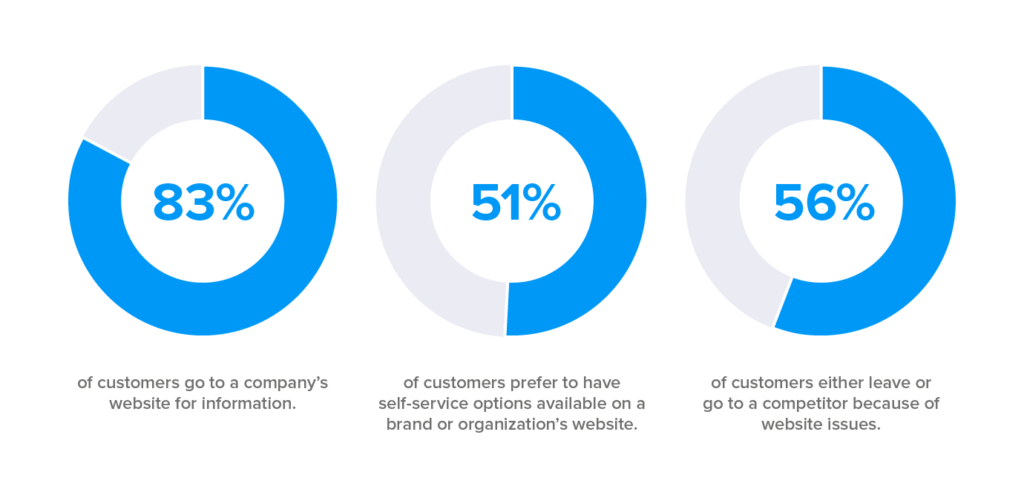
Live chat software
Businesses that offer live chat support generate five times as many sales compared to companies that don’t assist their customers through live chat.
Additionally, the majority of consumers claim that they prefer communicating with businesses through live chat.
All of this makes using a live chat software solution for your business a no-brainer.
Implementing live chat will allow you to help your customers quicker, as well as enable your customer support reps to assist multiple people at the same time.
It will also allow your reps to take a proactive approach to customer support and give them the opportunity to learn more about your customers’ needs and pain points.
Customer support in 2020
Customer support involves helping customers use a business’ products or services to the fullest extent, as well as assisting them with any issues that may arise. It’s different from customer service, which entails providing customers with all the value they paid for when they purchased a product or service.
In the past, customer support was considered a cost center. However, today’s businesses understand the importance of customer support for improving customer satisfaction and loyalty. Customer support can help businesses increase customer retention, generate positive reviews and testimonials, gain a competitive advantage, and improve their products or services.
The key elements of customer support include style, tone and voice, speed, coverage, language, and the support process. This means that businesses need to decide how they’re going to approach customer support, what kind of tone and voice they’re going to use, how fast they’re going to respond to customer inquiries, during which hours their support will be available, and what languages they’re going to support.
When looking to improve customer support, businesses should start by putting in the effort to respond to customer requests immediately, even if they don’t have a solution to the customer’s problem yet. It’s also crucial to personalize your customer support response for each specific customer.
Furthermore, businesses need to focus on hiring the right people for customer support roles. A support representative should be mentally tough, highly empathetic, and respectful. They should also have extensive product knowledge, as well as go through a company training program that will enable them to learn more about the company’s vision, as well as develop time management and problem-solving skills. It’s also important to empower your customer support team by showing how much you value them, as well as including them in the decision-making process.
Having a good customer support service in today’s age inevitably involves being available through multiple channels. Which channels you’re going to support will depend on the preferences of your customer base, as well as the nature of your offering. You’ll also need to employ the necessary software to help you manage all the customer support requests you receive from different channels. In most cases, this will include using one or more of the following: a ticket system, a customer feedback system, a knowledge base, and live chat software.